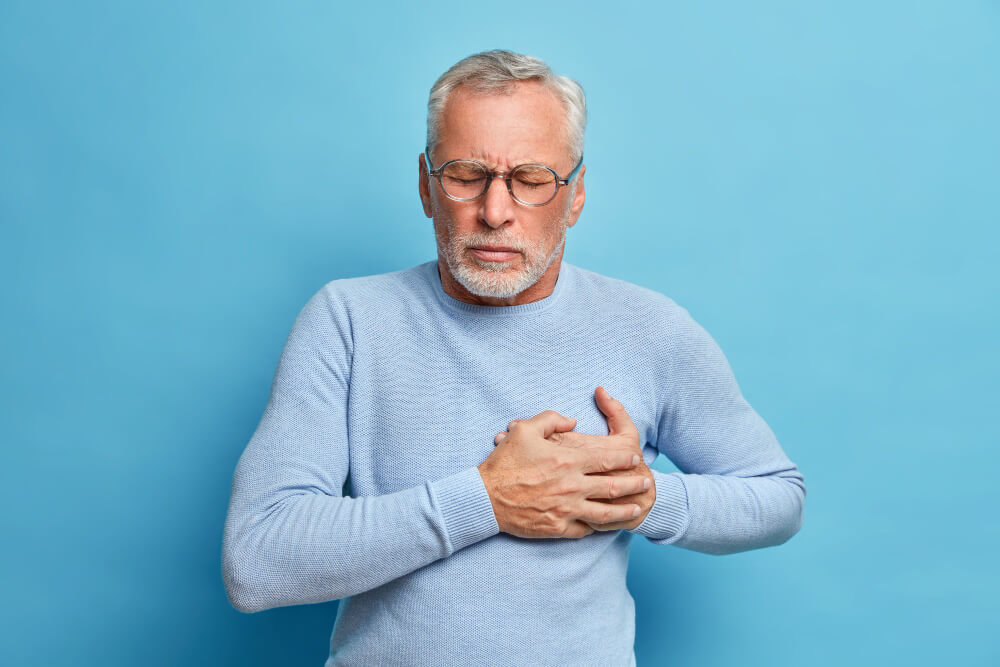Heart Attack: Recognizing the Threat, Reacting Quickly, and Recovering for a Healthy Future
A heart attack, also known as a myocardial infarction, is a serious medical emergency that occurs when blood flow to a part of the heart is blocked. This blockage typically happens due to a buildup of fatty deposits (plaque) in the coronary arteries, which supply oxygen-rich blood to the heart muscle. When blood flow is restricted, the heart muscle starts to die, leading to chest pain, discomfort, and potentially life-threatening complications.
This article delves into the complexities of heart attacks, equipping you with the knowledge to recognize the warning signs, understand treatment options, and ultimately, prioritize your heart health for a longer, healthier life.
Recognizing the Warning Signs of a Heart Attack
While chest pain is the most commonly recognized symptom of a heart attack, it can manifest differently for various individuals. Here’s a breakdown of the key symptoms to watch out for:
Chest Discomfort
The most frequent symptom is a feeling of pressure, tightness, squeezing, or pain in the chest. This discomfort can be intense or mild and may last for minutes or come and go. It’s crucial to note that the pain isn’t always crushing or severe, and some people describe it as a burning, aching, or fullness sensation.
Pain Beyond the Chest
Discomfort can radiate to other areas besides the chest, including the arms (especially the left arm), shoulders, neck, jaw, back, or upper abdomen. This radiating pain can often be mistaken for other conditions, making it essential to be aware of its potential association with a heart attack.
Shortness of Breath
Feeling short of breath or difficulty breathing is another significant symptom. This can occur at rest or during minimal exertion and can create a sense of suffocation or anxiety.
Other Symptoms

Additional warning signs can include:
- Nausea or vomiting
- Sweating or clammy skin
- Lightheadedness, dizziness, or fainting
- Fatigue or extreme weakness
- Indigestion or heartburn-like feeling
- Anxiety with a sense of impending doom
Recognizing Atypical Symptoms in Women
Women are more likely to experience atypical symptoms during a heart attack compared to men. These may include:
- Unusual fatigue
- Shortness of breath
- Nausea or vomiting
- Pain in the jaw, neck, or back
- Discomfort in the upper abdomen
- Lightheadedness or dizziness
It’s important to remember that not everyone experiences all these symptoms, and the severity can vary greatly. However, if you experience any combination of these signs, especially if they’re new, unusual, or persistent, it’s vital to seek immediate medical attention.
Taking Action During a Heart Attack: Every Second Counts
Experiencing potential heart attack symptoms requires immediate action. Here’s what you should do:
- Call Emergency Services Immediately: Don’t hesitate to call emergency services, even if you’re unsure if it’s a heart attack. Every minute counts in getting treatment to minimize heart damage.
- Stay Calm and Sit Down: While waiting for help, try to stay calm and sit down in a comfortable position. Avoid strenuous activity.
- Loosen Tight Clothing: Loosen any tight clothing around your neck or chest to ease any discomfort.
- Aspirin (if available): If you have aspirin readily available and haven’t been advised against it by a doctor, chew and swallow a low-dose aspirin tablet (325mg) unless allergic. Aspirin helps thin the blood and may improve blood flow. However, never give aspirin to someone else without consulting a medical professional.
- Follow Emergency Personnel Instructions: Once medical help arrives, follow their instructions carefully. They will assess your condition, provide immediate treatment, and transport you to the hospital for further evaluation and treatment.
Treatment Options for a Heart Attack
The primary goal of heart attack treatment is to restore blood flow to the heart muscle as quickly as possible to minimize damage. Various treatment options are available depending on the severity of the blockage and other factors. Here’s an overview:
Medications
- Thrombolytic medications (clot busters): These medications can dissolve blood clots blocking the coronary artery, improving blood flow to the heart muscle. However, they are most effective within the first few hours of a heart attack.
- Antiplatelet medications: These medications help prevent blood clots from forming, reducing the risk of further blockage. Aspirin is a common example.
- Nitroglycerin: This medication helps widen blood vessels, improving blood flow to the heart and relieving chest pain.

